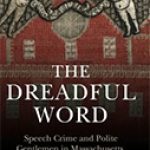Neighborhood of Fear: The Suburban Crisis in American Culture 1975-2001

Author: Kyle Riismandel
Publisher: Johns Hopkins University Press, 2020. 240 pages.
Reviewer: David Schultz | September 2022
Suburbia occupies a unique location in American culture. It is the pejorative place of single-family houses, white picket fences, and the traditional nuclear family with 2.1 children. It is also supposed to be a place of retreat from the decadence and crime of urban America and, as a result of racial integration of schools in the 1960s and1970s, a White-Caucasian conclave. In short, suburbia was born of the American dream and fear. Riismandel tells the intertwined story of dream and fear, explaining how myths about race and crime drove policy makers and criminal justice policy for more than a quarter century in an effort to insulate suburban family and children from the supposed predatory threats that could creep there from the cities.
Criminal justice policy, as is true of policy in general, is sometimes constructed out of fear and myth, but not facts. Often, it is the mobilization of fear that is a potent driver of policy and human behavior. In so many ways, the post-World War II exodus to the suburbs was a product not simply of cheap land and economic interest, but a fear that cities, often increasing in their racial populations, were becoming dangerous places to live. Whites sought refuge in suburbs as a way to escape crime, as well as to shield their children from predators and dangers. Cities were seen as the product of governmental failure, as police were unable, according to the author, to provide the type of protection that middle class families desired. Thus, they headed to the suburbs.
Yet Riismandel contends that the New Right and the Reagan administration (and then into the Clinton era) sought to exploit crime and fear as tools of political mobilization and manipulation. They invented dangers lurking at the doorsteps of suburbia, from which only they could protect these white families. This resulted in what the author calls “productive victimization.” Suburban families and children were seen as threats of a variety of dangers and demanding of government policies, such the hiring of more police, tougher and longer prison sentences, and a host of other law and order measures. As a result, White suburbanites and the New Right constructed a host of demons that were terrorizing them.
The most obvious demon was drugs. While Richard Nixon invented the War on Drugs with the not-so-subtle coded message that the threat was really race. Reagan and Clinton expanded on it. The crack pandemic was as much about violence as it was about race. Labeling juveniles as super-predators, who needed to be treated like adults, was the result.
But the fascinating part of this book is the identification of the other demons that were used to arouse fear and garner votes. Adam Walsh’s America’s Most Wanted scared people into believing that, at any second, someone would abduct their child. Teenagers at malls hanging out at video arcades were threats. As was Dungeons and Dragons. Tipper Gore convinced us that music lyrics had satanic messages. The solution was private security, geographic NIMBY to get dangers away, and the NRA convinced everyone that guns were needed to ward off threats.
Riismandel’s book simply does an excellent job in linking the politics of the New Right with race, suburbia, fear, and the supposed virtues of home ownership that ought to be free from all dangers, real and manufactured.
The time frame for the book ends with 2001. One cannot help but think of how the resurgence of urban crime in America in 2020-2022 are launching a new neighborhood of fear. Carjackings, murders, and other crimes are starting moving to the inner ring suburbs, but certainly not in proportion to what is happening in cities. But we saw Donald Trump and many other politicians again using fear and law and order as political rallying cries, with a level of success that nearly has killed any effort for police and other criminal justice reform. The script of fear that Riismandel writes of in this book continues to be the playbook for much of criminal justice policy in America today.
David Schultz is a Hamline University Distinguished Professor of Political Science, Legal Studies, and Environmental Studies and a Professor at the University of Minnesota School of Law.


